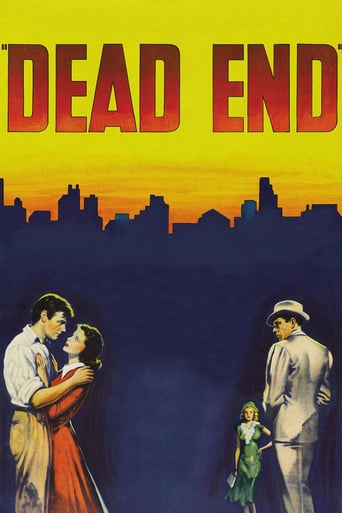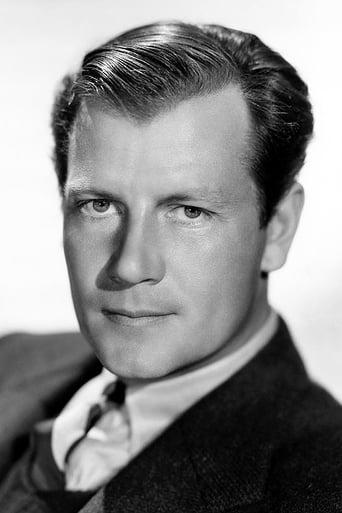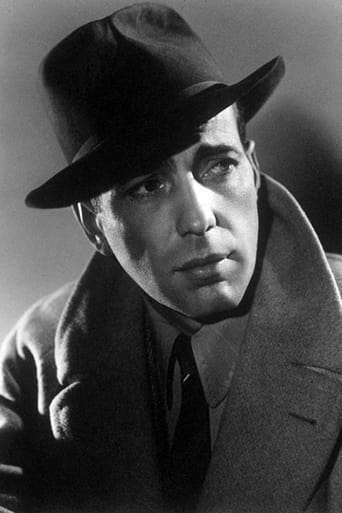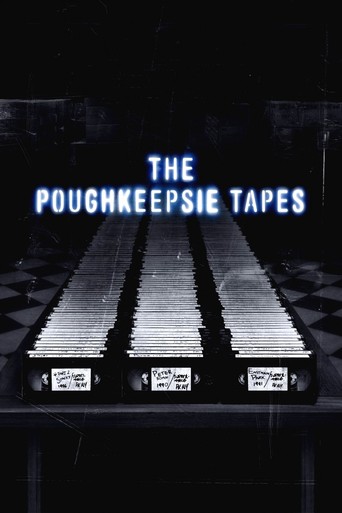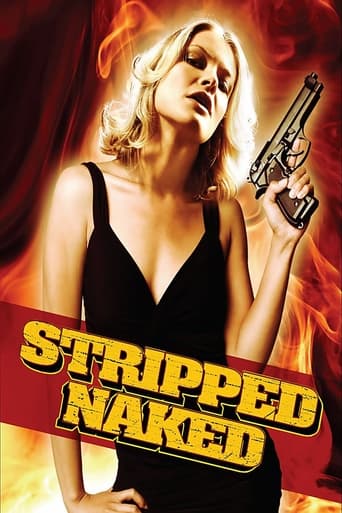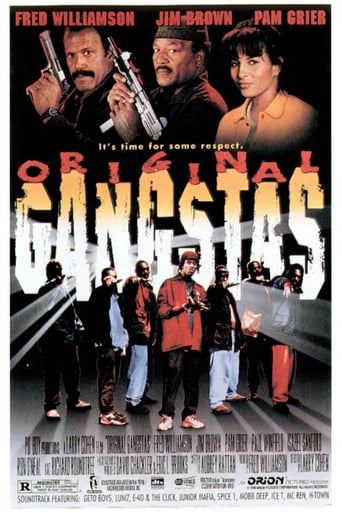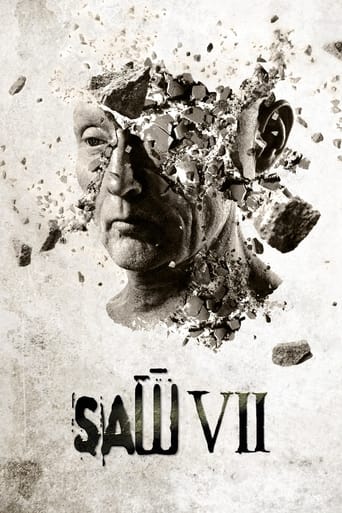Dead End (1937)
Mobster "Baby Face" Martin returns home to visit the New York neighborhood where he grew up, dropping in on his mother, who rejects him because of his gangster lifestyle, and his old girlfriend, Francey, now a syphilitic prostitute. Martin also crosses paths with Dave, a childhood friend struggling to make it as an architect, and the Dead End Kids, a gang of young boys roaming the streets of the city's East Side slums.
Watch Trailer
Cast
Similar titles
Reviews
Excellent, Without a doubt!!
Very interesting film. Was caught on the premise when seeing the trailer but unsure as to what the outcome would be for the showing. As it turns out, it was a very good film.
It's hard to see any effort in the film. There's no comedy to speak of, no real drama and, worst of all.
It's entirely possible that sending the audience out feeling lousy was intentional
DEAD END is an odd mix of social commentary and crime drama. For the first half of the running time, not much happens apart from the obnoxious Dead End Kids gang getting into various scrapes in their local area. The emphasis is on petty crime and degradation, a comparison between the sheltered lives of the rich and the desperate lives of the poor, and how the gulf between the two can lead to hatred and violence.At the same time as all this is going on, a sub-plot involves a decent hard-working local man, played by western star Joel McCrea, and a hard-bitten gangster type, played by Humphrey Bogart. The two men hate each other on sight and eventually their sub-plot takes over the story, leading to some exciting crime thrills. The Dead End Kids too get drawn into the mix, and the whole thing builds to a thrilling climax. DEAD END is a little unsatisfying to begin with - you just want to see someone give those brats a thrashing - but it picks up a lot and ends on a real high. The emphasis is on realism throughout and the film is all the better for it.
Picture Humphrey Bogart as a small time hood 'Baby Face Martin' hanging out at a dead end neighborhood on New York City's East Side with the Dead End Kids. William Wyler directs this small drama based on a Broadway play. The scenery changes very little. Just a little corner of the world where riverfront slums are smack dab rubbing shoulders with the elite living in luxury hotels. Martin has finally made the "big time" and is showing off in his old haunting ground trying to make an impression on the neighborhood gang of Dead End Kids featuring Huntz Hall, Bobby Jordan, Leo Gorcey and Billy Halop. An almost penniless sign painter Joel McCrea, hopes to escape the slums by romancing a wealthy lass played by Wendy Barrie. In this dead end a petty crime can lead to an even bigger punishment. And it seems that poverty lines have limited effects on romancing the wealthy. I just love these old black & white pictures and even more so if there is rain or snow involved. Of course substance sometimes reveal budgets or the lack of...I'm not ashamed to admit being a dreamer and a sucker for movies of this type...great story or not.Other players making appearances: Claire Trevor, Marjorie Main, Ward Bond, Wade Boteler, Charles Peck and Esther Dale.
It's unfortunate that now morons write gangster films in which all they do is try to "outsadist" everyone else's comic book bad guy.This film showed so much not just about gangsters, but how they fit into the world, and how other characters fit it. Joel McCrea is a trained architect who makes small change as a painter in the run down tenement. The Dead End Kids are varied characters themselves, with the nerdy voiced Gorcey, the later stooge Huntz Hall, and the likable Jordan, for example.And Bogie is the main gangster. We only see two gangsters for most of the film, and it moves at such a great pace that we forget it is only a meager setting, basically a city block.Bogie's bad guy would shine today. He goes back to his old neighborhood to see his mother and ex girlfriend, and their reactions, and his, are totally believable. This film is so well written, that modern gangster film writers are put to shame. No wonder they try to hide this film.There is so much in this film, that it is hard to say more without writing an essay, but it is exciting, dramatic, and adventurous all at once. All the actors, and all the crew, shine.
Cinema has always had an uneasy relationship with the theatre. By their nature stage plays tend to have very long scenes and base everything around dialogue, and there is something in the power of having real life players there in front of you that makes this workable. But there is also something about the very specific visual form of cinema that makes straight adaptations of stage plays potentially very boring.The way in which this can be overcome, other than completely restructuring the source text, is by ensuring that the picture keeps moving and keeps storytelling on a visual level. You see, perhaps the most important difference between stage and screen, is that in the theatre every audience member sees things from a slightly different angle or distance – there is no universal perspective, and theatre directors have to ensure that everything is clear whichever seat it's seen from. But in the pictures everyone sees the exact same image at any given moment, and a screen director must find the best camera placements and shot arrangements. Fortunately for Dead End, this screen director William Wyler was among the best and most inventive users of space on screen. For starters, look at how the shots of the rich folks contrast with those of the poor ones. In the former, the camera mostly keeps an aloof distance, and everything is picked out in crisp white. In the latter, the camera is closer to the action, and the image is filled with mottled shades of grey.The other very important thing in adapting stage plays to screen, is to ensure the performances are presented as well as possible, in order to give cinema audiences a taste of that same atmosphere and presence they would feel in front of a stage. Wyler also happens to be especially good at this. In particular he is bold enough to focus us on just one facet of a performance, sometimes keeping a character with their back to the camera and not showing us their face, forcing us to focus more on their posture, or the reaction of the opposite person. He also keeps the entrances of characters in keeping with their nature – for example having Humphrey Bogart smoothly slide into the frame, or craftily appear in the background as other figures move aside.And the performances pay off big time. This was still a period in which an actor like Bogart was unlikely to be anything but a villain, but his appearance here surely raised his profile considerably and put him one step closer to those heroic leads. He adds some incredibly subtle yet effective touches – for example, when Joel McCrea gives him the cigarette, look at how he pauses before grudgingly lowering his head to accept the lighted match, as if this tiny stretch is some extreme display of generosity on Bogart's part. Joel McCrea is one of those actors (like, say, Gary Cooper or Van Heflin) who doesn't look like he ought to be a good actor – he looks like he ought to be an absolute hunk of wood – but he isn't. This is probably his finest performance. It's also the best I have seen from Sylvia Sidney. And of course there are those kids, every one of them a character.The strange thing to consider about the acting in Dead End, is that all the performances are essentially one-dimensional – but in the best possible sense. Bogart is continually a mean and moody presence, moving and speaking slowly, submerging his feelings under a veneer of hard-hearted masculinity. In so doing he fulfils his character's placement as the symbolic archetypal gangster figure. Sylvia Sidney is the eternal independent working class lass, while McCrea is the honest, level-headed working man, and even when he turns to violence it seems not so much character development but merely the natural result of his principled persona in extreme circumstances. Claire Trevor, in her portrayal of the prostitute-moll, has the very opposite tone to the measured performances of Bogart and McCrea, all venom and fragile emotion. Of such things many a Best Supporting Actress nomination is made.The odds were perhaps stacked in the filmmakers' favour with Dead End, it being a very engaging and punchy play that lends itself well to the cinematic medium. Of particular appeal is the way it begins as a kind of plot-less social study, but gradually a story emerges as the character's lives become interwoven. Still, it is the superb efforts of Wyler and his cast that really bring this one to life.
